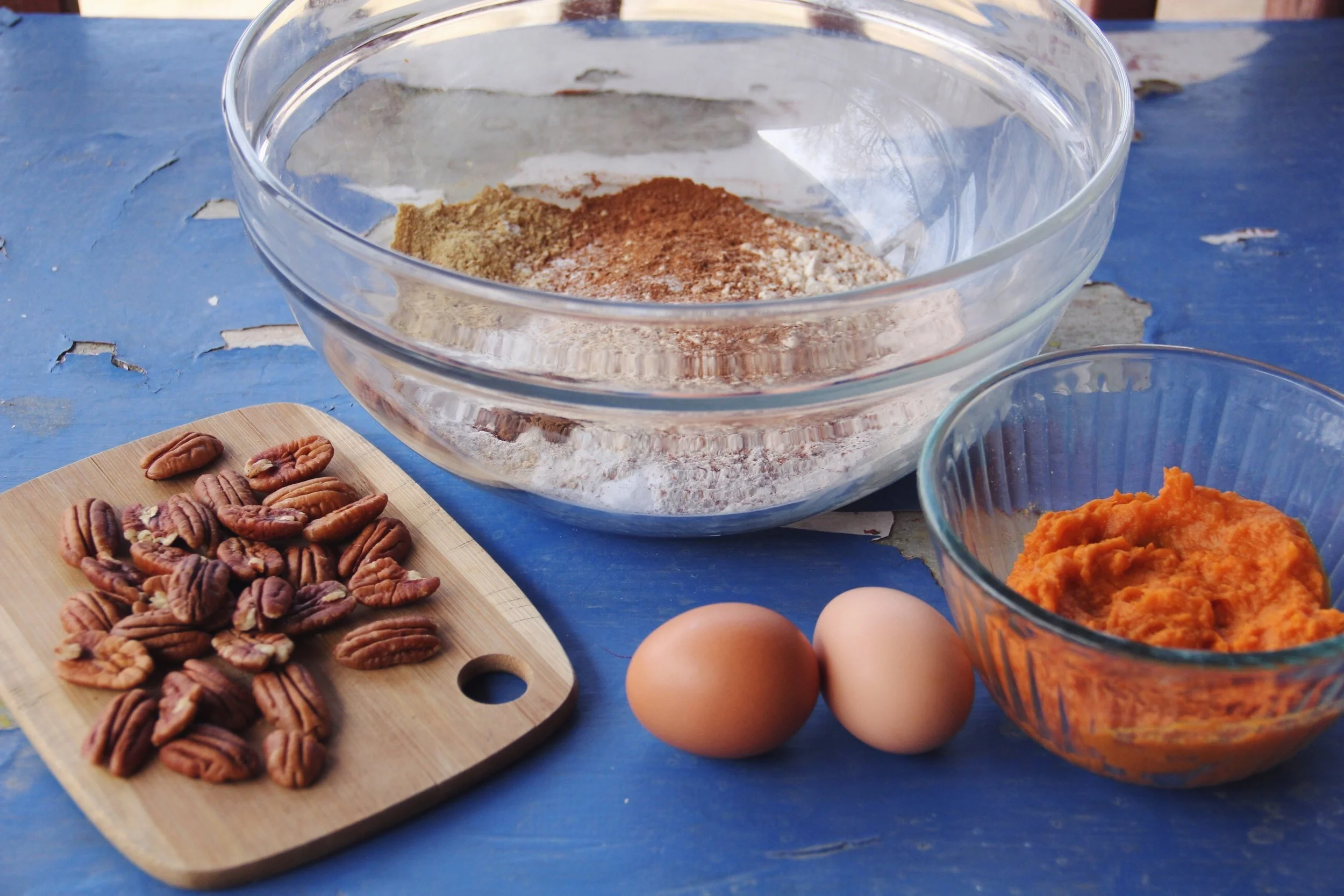On Maple Syrup Season & a Sweet Potato Loaf Recipe
This blog post was revised on February 7, 2024
Living Simply Through Seasonal Food Connection
Within the Mid Hudson Valley of New York exist a hub of humble folk who live simply. Maple trees get tapped during the winter, mead gets made with local honey in the spring, kraut gets fermented at the peak of summer heat and fiber gets dyed with black walnuts in the fall. I hope to depict within this entry a small window into the reality of life as is for myself and those I care about in this region, especially as it comes to pass during winter. I think it’s in the practices we hold around seasonal living that some bigger issues that so many of us are grappling with get addressed, such as the impacts of “fast” (food, healthcare, spirituality, fashion, etc.) on our climate and personal experiences of wholeness. My hope is that some pieces of this entry might encourage others to live in ways that deepen their connection to and reverence for the natural world, or at the very least enhance curiosity regarding a slower pace of living.
From Sap to Syrup: The Journey of Maple Syrup
There are a few kinds of natural sweeteners that are produced by boiling down sap, or water running through trees, into a pourable syrup. Maple syrup is perhaps the most popular of these sap based sweeteners within the Northeastern region of North America, where it is most commonly produced. When the nights are cold and the days are warm, sap drips out of taps plugged into sugar maple tree trunks and into buckets which gather the sap, also known as maple water. Syrup is then produced from the gathered tree sap by boiling it down until it becomes a syrupy consistency.
I think of maple sap as the Northeast version of coconut water, filled with the vital life force of sugar maple trees. It’s very special to be able to drink maple sap straight from the tap, before it gets processed into syrup. Drinking a sip of maple water sends a spark through my body quite unlike any other water I’ve drank before, with the closest experience I’ve had being drinking coconut water from coconuts freshly dropped off trees in Bali and Costa Rica. Drinking fresh tree water is dramatically different from drinking coconut water out of a bottle or carton. Though I’ve even seen maple water sold in Tetra Packs at my local food co-op, this way of consuming tree water in my experience is not as fulfilling as consuming it right from the tree.
40 gallons of maple water, when boiled down, produces 1 gallon of maple syrup. Upon realizing how much maple sap is required to produce maple syrup, its sacredness can be moreso understood and not taken for granted. If one produces their own maple syrup, connection to the preciousness of this sweetener becomes easier though a tangle realization process.
I think of the full moon that occurs during maple tapping season as the sap moon, based on the practices and teachings offered for connecting to lunar rhythms in the book Full Moon Feast: Food and the Hunger for Connection by Jessica Prentice. As climate change has become a factor in the experience of seasonal living, time for maple tapping can happen now as soon as early January, though overall tap timing can occur anywhere from mid to late winter. This is the time of year when I truly cherish maple sweetened goods, especially when they are made with freshly boiled maple syrup.
Below you’ll find a recipe for a delicious baked good utilizing maple syrup as the sweetener. I hope you enjoy it!
Recipe: Sweet Potato Pecan Bread
This recipe benefits from utilizing organic, non-GMO, and locally sourced ingredients to enhance the flavor and nutrition of the recipe. Slices of this loaf are made even better when toasted and spread with grass-fed butter or coconut oil, sprinkled with bee pollen and/or coarsely ground sea salt, and served alongside a cup of delicious tea. This loaf is also a great accompaniment to soup, apples and cheese as part of a light and simple lunch.
Ingredients:
1 cup almond flour
1 cup sprouted whole wheat flour (read more about why I use sprouted grain flour in this post)
1 Tbsp ground cinnamon
2 tsp ground ginger
1 1/2 tsp baking powder
1/2 tsp baking soda
1/2 tsp nutmeg
1/2 tsp allspice
1 cup maple syrup
1/2 cup melted butter or coconut oil
2 eggs
1 large sweet potato (or small squash of choice)
1 tsp vanilla extract
1/2 cup chopped pecans (or nut of choice)
Directions:
Preheat the oven to 400F.
Place sweet potato on a baking sheet and bake until fully cooked, approximately 30 minutes. If using a larger squash, cut in half, scrape seeds out, and place cut side down on a baking sheet. Puree and reserve 1 cup for the recipe, and save the rest for other recipes.
Combine dry ingredients except nuts in a bowl.
Combine wet ingredients in another bowl, including cooked sweet potato, adding eggs last to make sure they don’t curdle from the heat of your melted butter or oil.
Add wet ingredients to dry, being careful not to over mix.
Fold in nuts and place batter into a buttered loaf pan.
Turn the oven down to 350F and place the loaf in the oven.
Bake 1 hour or until center is completely cooked.
Let cool fully before cutting and serving (as you may notice in the below photo of this loaf, the center of the loaf is a little darker than its outer parts. That’s because I skipped this step for the photo shoot!)
All photos within this post taken by Julianna Blizzard.



